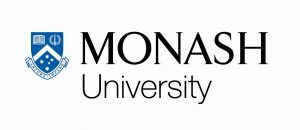8 October 2020
Release date: 25 September 2020
Researchers at Monash University have applied advanced machine learning technology to provide epilepsy patients with a more accurate and rapid diagnosis.
Together with Alfred Health and The Royal Melbourne hospital, researchers from Monash University’s Faculty of Information Technology (IT) and the Faculty of Medicine, Nursing and Health Sciences (MNHS), have automated the epilepsy diagnosis process using machine learning technology.
The study has monitored over 400 electroencephalogram (EEG) recordings of patients with and without epilepsy from Alfred Health and The Royal Melbourne hospital. The study has the strength of analysing data from two different hospitals, using two different patient groups to evaluate and compare the results.
There are an estimated 142,000 people living with epilepsy in Australia, and a further 3-4 per cent of the population will develop the condition at some stage in their lives.
Currently, the process of diagnosing epilepsy is quite lengthy and may involve multiple EEG recordings to detect abnormal activities (“spikes”). Using machine learning technology to automate epilepsy diagnosis would free up the time of medical professionals to better care for their patients.
This dataset of patient information from two different hospitals demonstrates how this particular machine learning model can be applied across a number of different datasets to help recognise the signs of epilepsy and facilitate the automated labelling of EEG data.
Epilepsy Research Fellow and PhD candidate from the Faculty of MNHS, Mubeen Janmohamed, was responsible for identifying suitable EEGs and labelling them manually, while fellow project researcher and PhD Candidate from the Faculty of IT, Duong Nhu, was responsible for ensuring the machine learning model was able to interpret and learn from two different datasets.
“The collaboration between Alfred Health and The Royal Melbourne hospital allowed our team to collect two large datasets of routine EEG recordings, which we then used to model our machine learning algorithm,” Mr Nhu said.
“Being able to apply a machine learning model across various datasets demonstrates our ability to create an algorithm that is more reliable, adaptive and intelligent than existing models, making our model more useful when applied in real-world scenarios such as diagnosing patients in a clinic.”
Senior Lecturer in the Faculty of IT Department of Data Science and AI, Dr Levin Kuhlmann, said the research was conducted in two stages.
“The objective of the first stage is to evaluate existing patterns involved in the detection of abnormal electrical recordings among neurons in the brain, called epileptiform activity. These abnormalities are often sharp spikes which stand out from the rhythmic patterns of a patient’s EEG scan,” he said.
“In this stage we will develop new techniques based on the foundation of existing methods for the algorithm to produce more accurate results. With the addition of long-term data, the second phase of the project will focus on novel seizure detection and prediction methods.”
Professor Patrick Kwan from the Faculty of Medicine’s Department of Neuroscience, said the future possibilities of this research gave hope to epilepsy patients.
“Our plans for this research will be to continue to improve the current models and further train it against additional datasets from other hospitals. We aim to develop an accurate algorithm which will be reliable across multiple hospital settings and usable in the early stages of epilepsy diagnosis, from both routine and sleep-deprived EEG recordings.”
“An algorithm like this would also be of value in low GDP countries or remote regions where there is limited expertise in interpreting EEG scans, a task which generally requires many years of training,” said Professor Kwan.
Future applications of this technology could also be its use as a training tool for graduate neurologists, providing them with a series of baseline diagnoses they can use to compare against epilepsy patient records.
Read the full media release via Monash University.




